How to Restore an iPhone or iPad Backup from iCloud
As the official cloud service, iCloud enables iPhone and iPad users to back up their devices wirelessly. Once you get an iPhone or iPad, Apple gives you 5GB of free storage to save backup files. You can automatically or manually back up your entire iPhone or iPad to iCloud through an internet connection. This guide tells you how to restore your iPhone or iPad from iCloud backup properly. So that you can get back lost data easily.

In this article:
Part 1. How to Normally Restore from iCloud Backup
The workflow of restoring an iPhone from an iCloud backup is not very complicated. However, there are some factors that you should know before performing the iCloud backup restoring process:
1. iCloud keeps your iOS data in two main ways, syncing and backing up. Once you turn on iCloud Photos, iCloud Drive, or Notes, your information automatically goes to the cloud and is kept up to date.
2. The data synced to your iCloud account won’t be included in the iCloud backup.
3. iCloud backup includes your device settings, Home Screen layout, purchased content, voicemail password, Apple Watch backup, photos, videos, messages, iMessage, and app data.
4. If you turn off iCloud Backup for an iOS device, the iCloud Backup files are kept for up to 180 days.
Now, let’s work through the whole workflow of restoring an iPhone or iPad from an iCloud backup:
Turn on your iPhone, open the Settings app, tap on your profile, and go to iCloud.
Choose Manage Account Storage or Manage Storage, and tap your iPhone or iPad name to check if you have an iCloud backup.
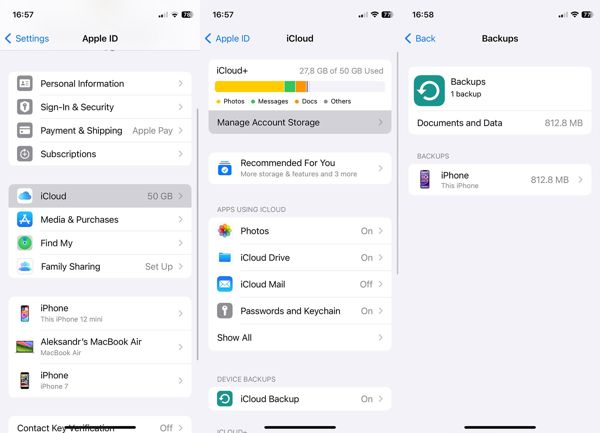
If not, go back to the iCloud screen in the Settings app, tap Backup, and press Back Up Now to make one immediately.
Next, go to the General tab in your Settings app, and choose Transfer or Reset iPhone on iOS 15 and newer or Reset on iOS 14 and older.

Tap the Erase All Content and Settings option. Read the alert, and tap Continue if you are ready. If prompted, enter your Apple ID password or iPhone passcode to disable Find My and verify your ownership.
When it finishes, your iPhone should boot into the Hello screen. Then set it up as a new device following the on-screen instructions. Make sure to connect to a stable Wi-Fi network when setting up.
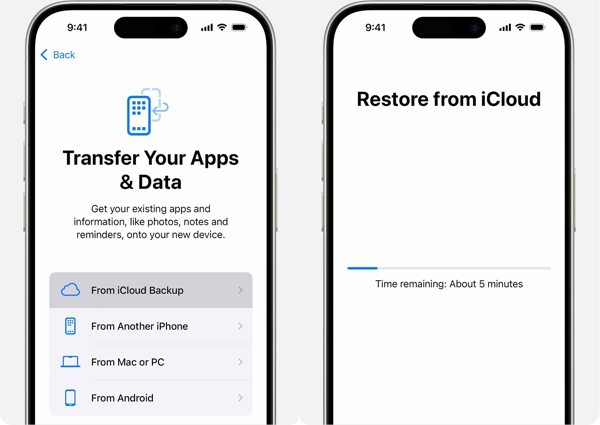
Choose From iCloud Backup or Restore from iCloud Backup when you reach the Apps & Data screen. It will and data on your iPhone as long as they are backed up.
Sign in to iCloud with your Apple ID and password. Next, choose a proper backup file according to the date. During the process, you need to sign in with your Apple ID credentials to get back your apps and purchases.
At last, finish setting up your iOS device.
Part 2. Restore from iCloud Backup Without Reset
As you can see, the normal method requires you to reset your device and erase all data and settings. If you hope to restore from iCloud backup without resetting your iOS device, imyPass iPhone Data Recovery is a good option. It is able to decrypt and open iCloud backup files on a computer.
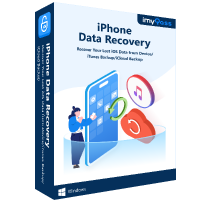
4,000,000+ Downloads
Open and preview iCloud backup files easily.
Restore the iCloud backup to the iPhone without resetting.
Select specific data types to retrieve from iCloud backup.
Restore the entire iCloud backup or specific files.
Support the latest versions of iPhone and iPad.
How to Restore iPhone from iCloud Backup Without Reset
Download iCloud backup
Install the best iPhone data recovery software on your computer and launch it. Choose the Recover from iCloud Backup File on the left sidebar, and sign into iCloud by entering your Apple ID and password. Click iCloud Backup, hit the Start button, and press the Download button next to an appropriate backup file.
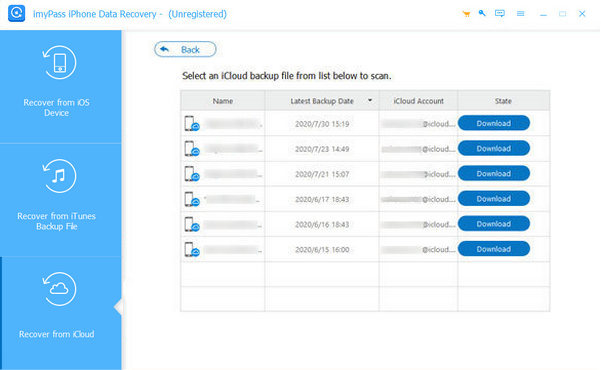
If 2FA is enabled, input the verification code.
Preview data in iCloud backup
Next, select the data types that you want to recover. Then you should see a checkmark next to the data type. If you are not sure, check the box next to Select All. Click the Next button to open the iCloud backup file. Here you can preview the data in the backup. To filter the deleted files, pick Show Deleted Only from the top list.
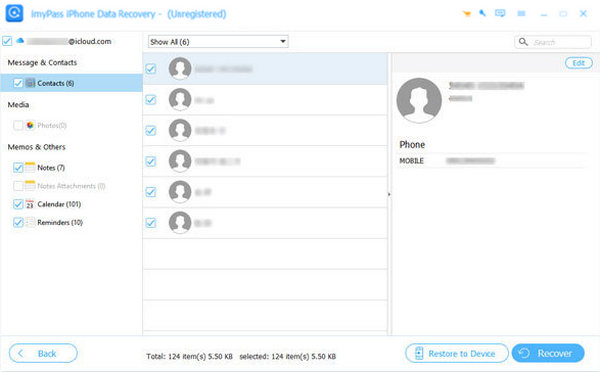
Recover data from iCloud backup
At last, select the files and entries that you want to restore, and click the Recover button. Set an output folder on the pop-up dialog, and hit Recover again to restore the iPhone from iCloud backup on the computer. During the process, keep your iOS device connected to your computer. For example, you can recover iPhone deleted calendars.
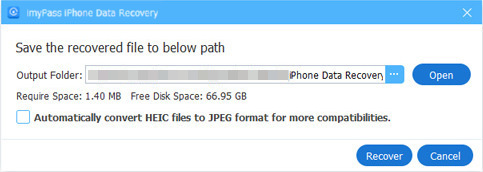
Part 3. Download iCloud Files and Transfer Them to Device
How to Restore Files, Contacts, Bookmarks, and Calendars from iCloud Backup
In addition to resetting, you can also restore your iPhone from iCloud backup on the web. However, this way is only available to a part of data categories, like iCloud Drive, contacts, bookmarks, calendars, and reminders.
Access www.icloud.com in a web browser, and log in to your account with your Apple ID and password. Scroll down and click Data Recovery. Or sign in www.icloud.com/recovery/directly.
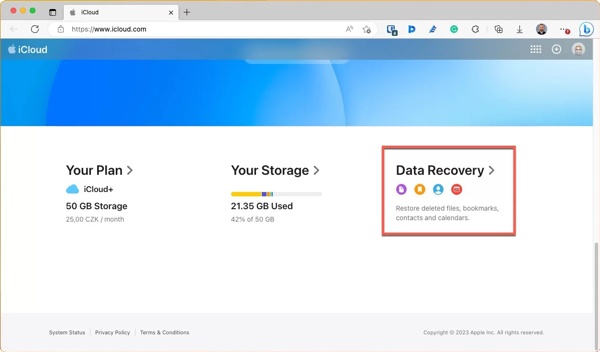
Then you will see four options:
To restore files from iCloud Drive, choose Restore Files, check the boxes next to all files that you want to get back, and click the Restore button. The selected files will immediately return to their original folder in iCloud Drive.
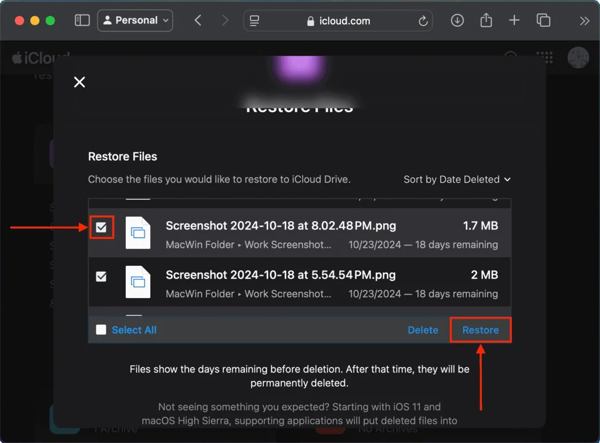
If you want to restore contacts, choose Restore Contacts, select the iCloud backup file according to the date, and click the Restore button to restore iCloud backup to the iPhone Contacts app.
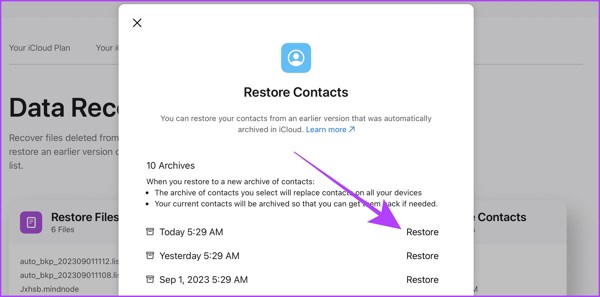
If you intend to restore bookmarks, pick Restore Bookmarks, choose a proper backup file, and hit the Restore button.
If you wish to restore calendars and reminders from iCloud backup, choose Restore Calendar, locate the right backup file based on the date, and hit the Restore button.
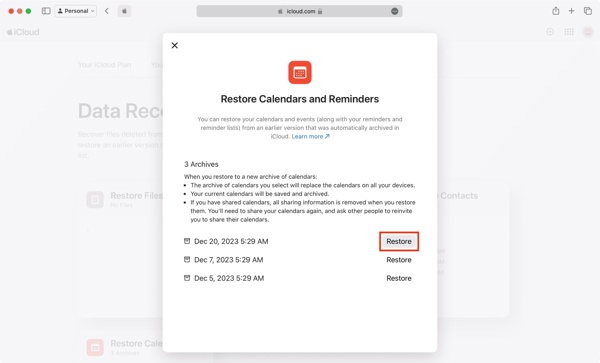
How to Download iCloud Files and Transfer to Device
As mentioned previously, the files synced to iCloud won’t include your iCloud backup. However, you can download these files from iCloud and merge them with the existing data on your iOS device.
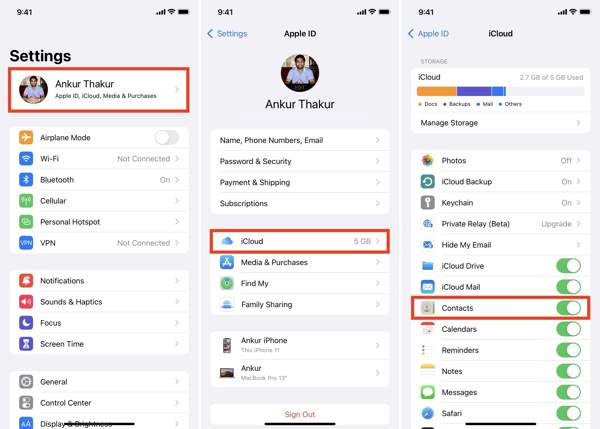
Connect your iPhone to a Wi-Fi network.
Tap on your profile, choose the iCloud option, and you will see all data categories synced to your account.
Toggle off a data type, like Contacts. When prompted, tap the Merge button to download and merge contacts synced to iCloud.
Then repeat step 3 to download other data synced to iCloud, and merge them with the current data on your iOS device.
Note:
You can also download the synced photos, contacts, notes, and more from the iCloud website to your computer. Nevertheless, it is impossible to transfer them to your iPhone and merge them with existing data.
Conclusion
This guide has demonstrated how to restore iPhone or iPad backup from iCloud. The normal way requires you to factory reset your device. Or you can restore files, contacts, calendars, reminders, and bookmarks from the iCloud website. imyPass iPhone Data Recovery enables you to open an iCloud backup file and restore any files without resetting. More questions? Please write them down below.

